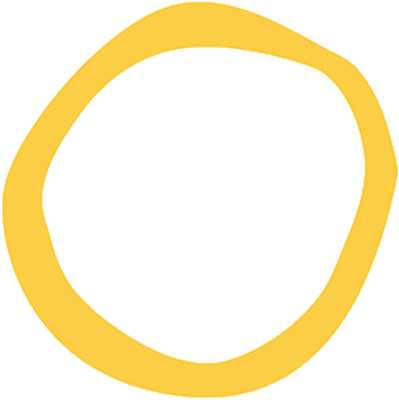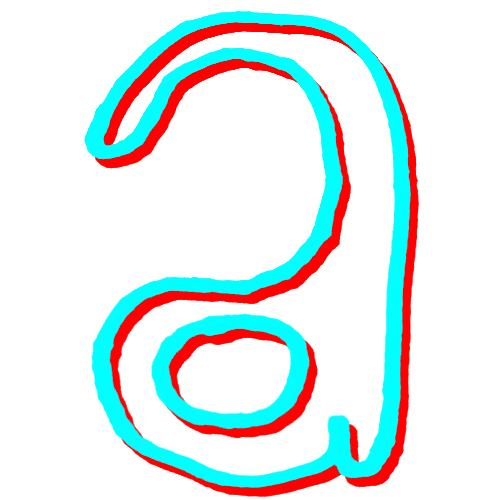The Anatomy of Reading: Amalie Smith and Anna R. Winder
The layers are accumulating before I start to read. A 2023 group exhibition, Eavesdropping at Scherben, Berlin, but one that has finished and I wasn’t ever in Berlin. Online I find and order a small book, “not conceived as a catalog documenting the exhibition, but as a companion, a second half, that is in conversation with it but functions beyond and independently of it” (6), says its Editorial, by Inga Charlotte Thiele and Anna R. Winder. It does so with a title - Glancing to the right of Antares in Medium Blue, I intuit cosmic allurement - “borrowed” (5) from Mei-Mei Berssenbrugge’s A Treatise on Stars (2020). There, in the first section of “Star Beings”, its opening poem, the poet watches and waits as the late afternoon sky darkens and “Stars arrive non-visually, first.” (3). It is an experience repeated when the reflective black cover of Thiele and Winder’s book is opened to reveal, amongst other contributions, multi-coloured poem-drawings by Sophie Podolski and Alice Notley.
Winder’s own contribution to Glancing is a translation from the Danish of Amalie Smith’s Læsningens Anatomi (2012). An “annotated and unauthorized” (106) translation, Winder writes, although later she informs the reader: “I did tell Amalie Smith that I had done so” (111). Winder adds her own numbered comments to Smith’s prior assemblage of notes and quotations, whilst re-working the texts display on the page. The end result is in many ways a new piece of co-authored writing: “Amalie Smith: The Anatomy of Reading”. The double-stranded text seems indebted to a similar device in Smith’s novel Thread Ripper (2020).
*
When reading Day 5, “reflexive” seems an inadequate description of its multiple layers of self-reference. Smith (in Winder’s English) begins by telling us she is “Finishing text” (111) that is the very writing we are reading, sending it to her Professor and an external tutor before they talk later in the week. What I am reading, then, is itself “The Anatomy of Reading", whilst also a commentary on another “The Anatomy of Reading” being read somewhere else. When Smith then quotes her own writing (in italics) she is observing herself finishing the text she is forwarding on, or recording a doubt after hitting send on the email. The published version is not so much a final, single edit as a consensual composite of different variants and time zones.
Smith’s self-quotation concerns anatomy, whose application to reading is her book’s titular concern:
Anatomy is the science of the bodily structure and configuration of organisms. Atom: indivisible (in.divid)—anatom: divisible, cuttable. The term anatomy can also be used figuratively, according to my dictionary “a study of the structure of the internal workings of something: Machiavelli’s anatomy of the art of war.” When I want to look at the anatomy of reading it is because I want to understand its inherent structures through a dissection of the body of reading. (111)
When Winder annotates this text, from what position(s) does she speak? She remembers how she had wanted to include Smith’s book in an academic class, so translated it to facilitate discussion with non-Danish students.
Actually, she continues, she translated the whole book, and despite Smith’s knowledge of her work “it still remains an unauthorized translation, as I’ve not been able to finish it yet.” Winder could not conform to the conventional roles of text, author, and translator: “To be honest" Winder writes, “I have a strange urge to continue writing the book” (111).
Winder’s annotation here interrupts Smith before the later can comment on that anatomy (self-) quote, but when Smith is allowed to continue she writes: “Is there a problem in longing for the inherent and is this longing latent in the anatomy? The being of reading. What happens if one claims that two mutually oppositional features are inherent?” (111)
So far, multiple layers of reference have created a fast paced reading experience, but this gets more personal, necessarily more opaque, my reading slowing. Why are the inherent in anatomy and being of reading opposed? It suggests preparing my own annotations, if only I had access to the InDesign file and there was room left on the page. Such thoughts seem specific to the subject of reading, its accumulation that is forever recalling past readings and suggesting future ones. However much I enjoy the double stranded storytelling of Thread Ripper, it never occurs to me to continue writing it by myself.
*
Anatomy, my hypothetical annotation explains, evokes Rembrandt’s The Anatomy Lesson of Dr. Nicolaes Tulp of 1632. The body laid out, the surgeon beginning his work, holding up a scissor-full of tendons having made an incision in the man’s side. The smartly-dressed audience, who do not look at the body but over it at the large open book on a stand. An actual event in its stage lit theatricality, but also, it could be argued, the beginning of a mechanistic conception for the human, a glorious rational Enlightenment or a cruel, detachment which might explain today’s environmental destruction.
Juxtaposed with “The Anatomy of Reading” it suggests how for Smith the “cuttable", “divisible", even the “bodily” (111) have become absorbed into behaviors and understandings around reading, where they are wholly metaphors but evoking emotions from their fleshy past. Smith’s text (as an earlier Winder annotation informs) was written as she began to read again after being unable to do so for three months following a severe concussion. Reading, then, is a post-trauma rehabilitation, as if Rembrandt’s dissected subject could sit up, pick six good books, and get themselves better.
*
At 12pm on Day 5, Smith returns to the cemetery where she often goes to read, on this occasion with a Danish edition of Johanna Drucker’s The Typography Project, quoting (Danish first, then Drucker’s English) that author’s assertion that:
The foundational principle of alphabetical writing is to represent a single sound of spoken language by a single letter. (…) The phonetic principle is the unique characteristic of the alphabet (111).
“The specialisation inherent in the alphabet:” writes Smith immediately after, as if mulling it over, “a single sound for a single letter" (112). Winder contrarily adds a note that Antonin Artaud counters this: he “does not think in separable bits of sound, but in multiplicity… a singular multiplicity, which can change qualitatively in fluid, successive state, where it is impossible to draw a clear line between the varying states” (112). Which describes how Winder conceives of her own relationship to Smith.
*
Often, Smith seems to be poised between an accumulation of quotations and a constructing of a linear through-line, an argument. If this is a continuous narrative in a single, physical location she also reads in the cemetery Marshall McLuhan’s The Medium is the Massage, quoting its comparison of “the technology of the alphabet” to the “bits and parts” method of the assembly line. Smith approves McLuhan’s word choice of inherent and organising principle. She wonders if her own questions about the “inherent” and “anatomy” might be resolved by two moves away from the alphabet technology: the first an awareness of the "Magic world of the ear, neutral world of the eye.” The second, quoting McLuhan again: “Visual space is uniform, continuous, and connected. The rational man in our Western society culture is a visual man” (112).
Both are problematic. The “magic world” quote already appears in Winder’s earlier footnote, so is Smith quoting Winder now? How is that possible? A further Winder annotation is placed at the top of the page, so I had read that first. Has the translator found a way to make Smith the commentator on author Winder? That particular annotation wonders if the ear separates sounds like sight does vision, if this is a natural habit or something that has to be taught. The structure and layout of the text offers one answer to that question.
As for that McLuhan quote, Smith and Winder’s text is a “Visual Space" that is tentative, artificial, Brechtian, unsettled, propositional, not as a tendency of modern society, or an overarching characteristic of the “rational man”, but as a demonstration of reading right.
*
Does Winder decide she has gone too far? Her annotations stop, there are none for Day 6 and Day 8. To end Day 5, Smith—now in the landscape of reading, the Danish cemetery forgotten—quotes historian and musician Rasmus Fleischer’s suggestion that reading is closer to playing an instrument than listening to music. Smith adds immediately after this a final sentence of her own: “An alternative to the understanding of reading as decoding (assembly line work).” Is this a commentary on Fleischer’s quote? A new proposition to unfold later? A return to the earlier Marshall McLuhan quote? “The Anatomy of Reading” urges be bolder: it could be a time-traveling quotation from an earlier draft, a future published article, or citing a comment the writer has yet to read or make. It is in these shifts, confusions, absurdities, flows, divisions, cuts of time and space, that the anatomy of reading is constituted, made inherent.
Works Cited
Mei-mei Berssenbrugge, A Treatise on Stars. New York: New Directions, 2020.
Amalie Smith. Thread Ripper. Translated by Jennifer Russell. London: Lolli Editions, 2022.
Inga Charlotte Thiele & Anna R. Winder, “Editorial”. In Glancing to the right of Antares in Medium Blue, I intuit cosmic allurement, edited by Inga Charlotte Thiele and Anna R. Winder, 5-8. Berlin: Fat Vampire Press. 2023.
Anna R. Winder, “Amalie Smith: The Anatomy of Reading”. In Glancing to the right of Antares in Medium Blue, I intuit cosmic allurement, edited by Inga Charlotte Thiele and Anna R. Winder, 106-117. Berlin: Fat Vampire Press. 2023.


